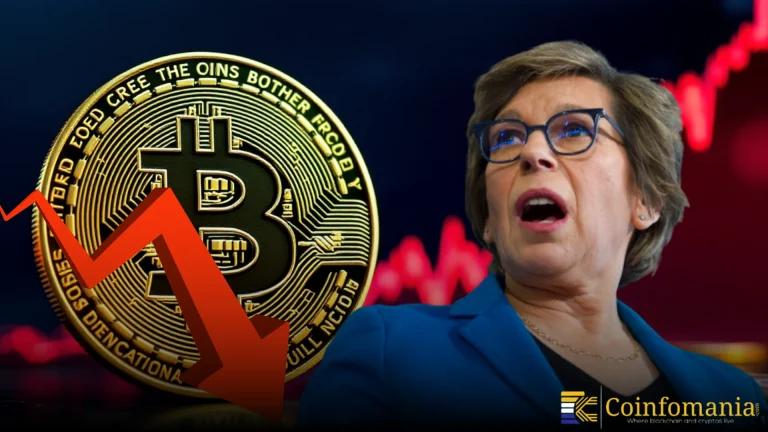U.S. Stock Market Slips Amid Iran Tensions and Oil Price Surge
U.S. stock market dips as Iran tensions rise, oil prices jump, and investors fear global energy disruption and inflation pressures.

Quick Take
Summary is AI generated, newsroom reviewed.
U.S. stock market futures fall after strikes on Iranian nuclear sites.
Brent crude briefly hits $81 amid Strait of Hormuz concerns.
Asian currencies weaken; investors await Fed signals and Iran’s next move.
On June 23, the Asian stock market saw a drop amid the oil price surge. The spike is mainly due to the U.S. airstrikes on Iranian nuclear facilities. These geopolitical developments caused the U.S. stock market to dip further before a partial recovery. The U.S. market opened with slightly lower figures compared to yesterday. Dow futures dropped by 350 points, but later followed by losses of just 100 points. Despite high tensions in the Middle East, investors are hoping for a market rise.
U.S. Stock Market Futures Dip Amid Geopolitical Fears
On June 23, the U.S. stock market S&P 500 and Nasdaq traded near a 100-point low, signaling investors’ fear. Traders are closely watching the Oil supply threats from the Middle East at the Hormuz Strait. If Iran closes the Strait, there will be a huge crisis in OIl supply. This narrow waterway handles 25% of global oil trade. The strikes opened a fresh chapter in the ongoing Israel-Iran conflict. Iran’s parliament has approved closing the Strait, pending National Security Council approval.
China’s real estate revenue also dropped to a decade low. Land and sales revenue fell 14.6% year-on-year to 194.1 billion yuan ($27 billion) in May. This is the lowest figure recorded since May 2015. The drop reversed a 4.3% growth seen in April, which had been the first increase in three months. The data comes from Bloomberg calculations based on figures released by the Ministry of Finance on Friday.
Oil and Currency Markets React Cautiously to Middle East Escalation
Brent crude briefly tested $81 per barrel but could not hold that level. It eventually settled up 1.4% at $78.07. U.S. crude also rose 1.4% to $74.88. Analysts warned of sharp price increases if shipping through the Strait of Hormuz is disrupted. Goldman Sachs predicted prices could touch $110 per barrel if the strait shuts for a month. Asian currencies, particularly the South Korean won, also weakened. The Bloomberg Asian Dollar index dropped to 0.3%. Indonesia’s rupiah fell as its central bank meddled to stabilize the currency. These moves reflect rising investor anxiety globally.
U.S. Stock Market Watches Fed Signals and Tariff Impact
Treasury yields moved modestly, with 10-year yields rising 2 basis points to 4.395%. The dollar index edged up to 99.042, reflecting a limited safe-haven move. The dollar gained 0.7% against the yen, reaching 147.07, while the euro slipped to $1.1497. Gold fell 0.3%, settling at $3,357 per ounce. Fed futures dipped slightly due to inflation concerns from rising oil prices. The U.S. stock market remains uncertain about near-term rate cuts. While Fed Governor Christopher Waller supported a July cut, most officials prefer caution. Markets now expect a higher chance of rate cuts in September. Powell’s congressional testimony this week remains key.
Global Headlines Add to Market Caution
Russia launched another heavy missile and drone strike on Kyiv on Monday, killing five and injuring at least 19. One residential building collapsed, with more casualties likely trapped. Subway infrastructure also suffered damage. Ukraine’s Interior Minister criticized Russia for not having empathy towards civilian areas. Also, NATO leaders are meeting at The Hague to discuss the recent changes in geopolitics and diplomacy. For now, the Trump administration has indicated no additional operations in Iran, unless Iran retaliates. The White House’s reassurance provided slight relief, though volatility remains high. The U.S. stock market could shift quickly if threats escalate.
Investors Eyeing U.S. Stock Market Fluctuations
The U.S. stock market began the week on a cautious note, facing pressure from global tensions and oil supply risks. The U.S. stock market began with fear and caution amid global pressure. Oil supply risks and price jumps are adding fuel to this drop. Investors are hoping for peace and growth in markets. However, in the current situation, Iran’s possible retaliation or blockage at the Hormuz Strait could shatter investor optimism. Also, Fed guidance continues to drive market volatility. If this continues, the investors might take back their investments.
Follow us on Google News
Get the latest crypto insights and updates.


